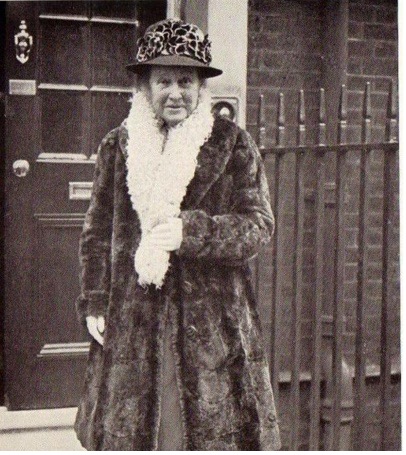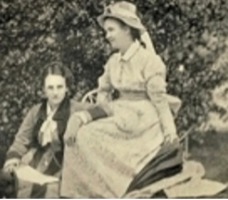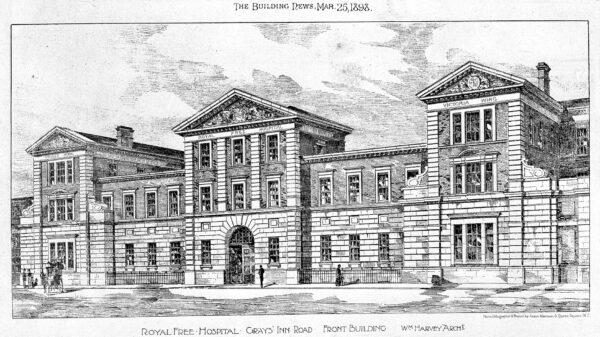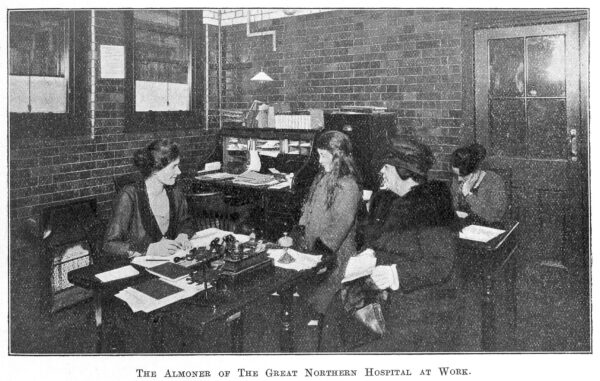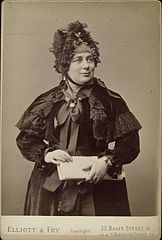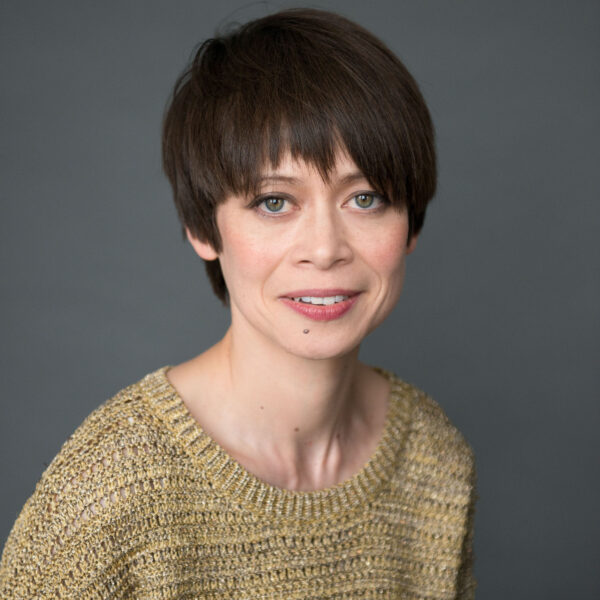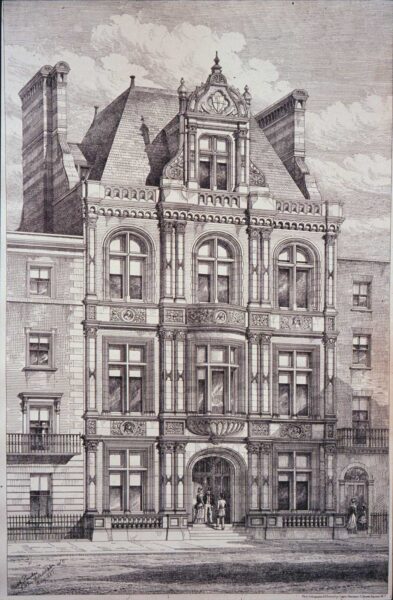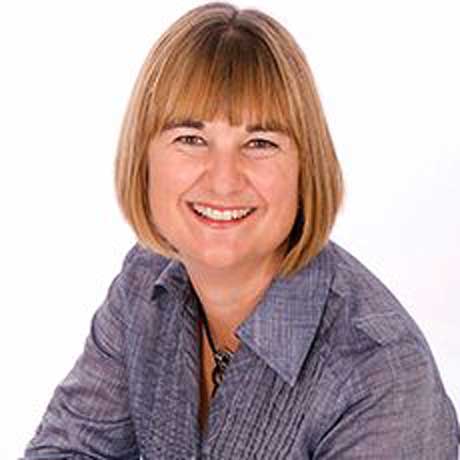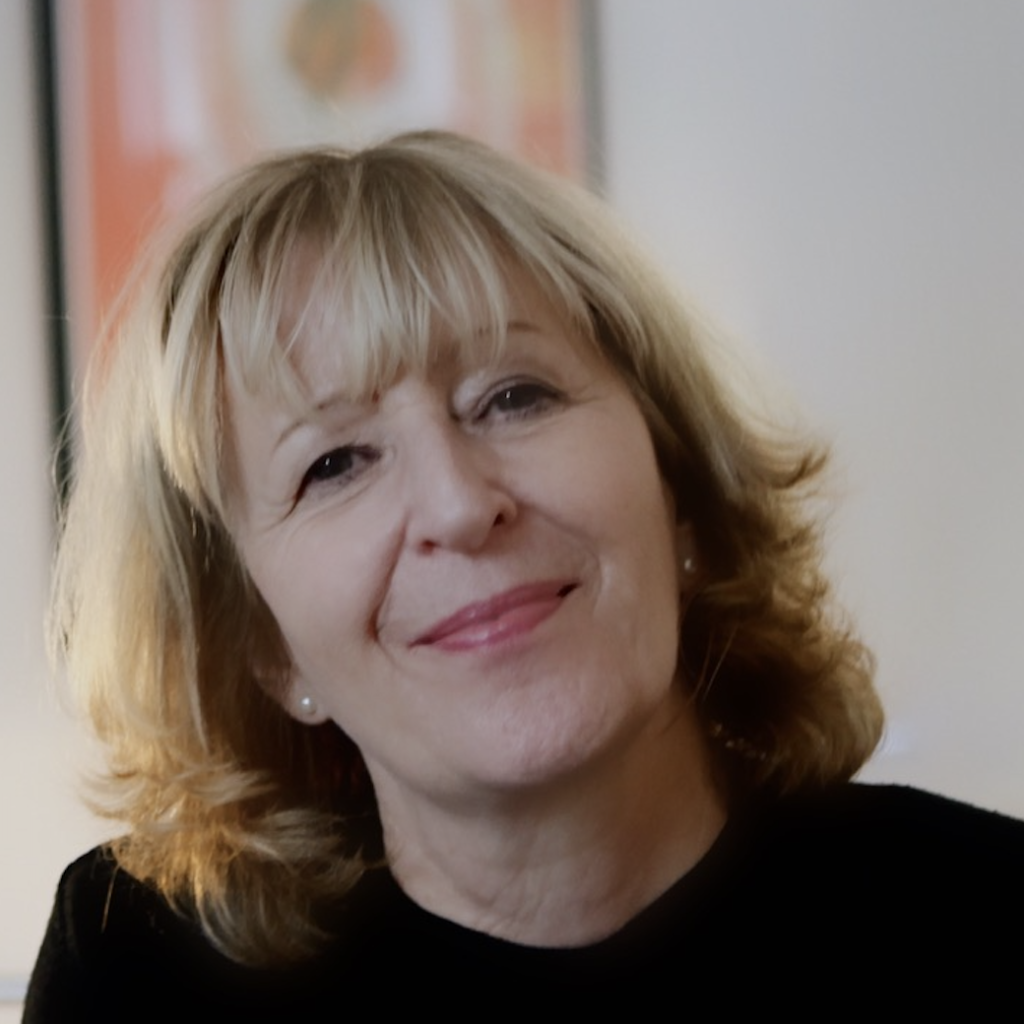RHODA GARRETT (1841-1882), AGNES GARRETT (1845-1935), FANNY WILKINSON (1855-1951), and MILLICENT FAWCETT (1847-1929)
Millicent Fawcett standing on the doorstep of 2 Gower Street, Bloomsbury, on her way to receive her DBE, 12 February 1925/ Rhoda and Agnes Garrett
A FULLY ILLUSTRATED TALK delivered to a packed audience at Senate House Library, on Friday 8 March 4.00pm by Elizabeth Crawford.
In the late-19th and early-20th centuries four pioneering women lived at 2 and 6 Gower Street, Bloomsbury. These houses were their homes as well as the sites of their commercial and campaigning enterprises.
The firm of ‘R & A Garrett House Decorators’ operated from number 2, which was first the home of the cousins Rhoda and Agnes Garrett. After Rhoda’s death, it housed Agnes and her sister Millicent Fawcett, leader of the constitutional women’s suffrage movement.
Fanny Wilkinson lived and worked next door but one, at number 6. She was the first professional woman landscape gardener, responsible for laying out over 75 of London’s public parks and gardens.
All four women were also involved, together with an intriguing assortment of friends and relations, in any number of other campaigns. All worked to improve the position of women.
REVIEW by Carole Woddis:
Bloomsbury Women
For anyone still under the impression that `the Bloomsbury set’ were the alpha-omega of late Victorian England, then look no further than a new series of talks, 19th century Women in Bloomsbury recently initiated by Julia Pascal and her Pascal Theatre Company.
In the first of the talks – held in the beautiful Art deco Senate House library building – historian Elizabeth Crawford covered an amazing amount of ground introducing the lives of the remarkable Garrett sisters – Elizabeth Garrett Anderson, the first woman to be qualified as a doctor in England – and her no less redoubtable sister, Millicent Fawcett, suffragist and campaigner, and their equally enterprising sister Agnes who with her cousin Rhoda set up an interior decorator design company under the title of R & A Garrett.
Crawford’s illustrated talk delved not only into details of their designs, unearthing existing examples of their hangings and furniture but even more strikingly, the life and work of another Bloomsbury neighbour, Fanny Wilkinson, the first female landscape designer. We owe something like 75 London green spaces and parks to the artistry and enterprise of Fanny!
Crawford, an assiduous and persuasive researcher, left us in no doubt as to the extraordinary, quietly revolutionary lives of the Garret sisters living at nos 2 and 6 Gower Street. And Fanny Wilkinson living at 15 Bloomsbury Street (now 241 Shaftesbury Avenue).
The one thing that stood out most vividly for me was their insistence on professionalism, training, qualifications – not for them the image of the `little woman at home’. These were confident women, determined to exercise and show that their skills were to be taken seriously – professional women, to be respected and reckoned with.
Something of an eye-opener, other talks in the series will no doubt be as informative and inspiration and are warmly recommended!
Elizabeth Crawford is the author of a number of books on aspects of women’s history. Of particular relevance to this talk is Enterprising Women: the Garretts and their circle.
She has written a blog on the work of Agnes and Rhoda Garrett for the University of London to support this talk and theSenate House Library’s accompanying display: The House Decorating Firm of ‘A & R Garrett’ | University of London.
Continue reading “Elizabeth Crawford Gower Street’s ‘Enterprising Women’: transforming the home, the land, and politics, 1875-1928.”


